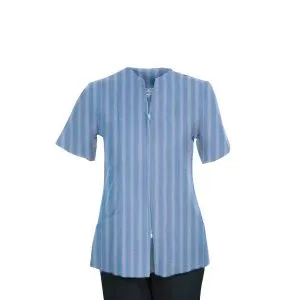Throughout human history, mythological symbols have served as powerful visual cues that convey authority, wisdom, and divine status. These symbols, often embodied in headgear, have transcended cultural boundaries and eras, shaping contemporary representations of leadership and heroism. Understanding the evolution of these symbols from ancient mythologies to modern branding enriches our cultural literacy and provides insights into how societies communicate power visually.
1. Introduction to Mythology and Symbolism in Human Culture
Mythological symbols have an enduring power that persists across civilizations and time periods. They act as a bridge connecting the spiritual and the societal, often encapsulating complex ideas about authority, divine right, and wisdom. In ancient mythologies, headgear such as crowns, helmets, and elaborate headdresses were not mere adornments but potent symbols of status and power.
The transition from mythic symbols to contemporary representations is evident in modern logos, fashion, and media. For example, the imagery of a helmet associated with Athena has influenced modern depictions of strategic intelligence, while crowns evoke sovereignty. This continuity underscores the importance of mythological symbols in shaping our collective understanding of heroism and authority.
- Introduction to Mythology and Symbolism in Human Culture
- The Significance of Headgear in Mythology and Ancient Cultures
- Modern Symbols Inspired by Mythology: From Ancient to Contemporary
- Case Study: «Le Zeus» and the Representation of Divine Authority in Modern Contexts
- The Psychological and Cultural Impact of Heroic Headgear
- Non-Obvious Dimensions: The Evolution of Mythological Symbols in Digital and Commercial Realms
- Conclusion: The Continual Rebirth of Myth in Modern Symbols
2. The Significance of Headgear in Mythology and Ancient Cultures
In many ancient civilizations, headgear served as a visual shorthand for societal roles, spiritual authority, and personal identity. Crowns, helmets, and elaborate headdresses were often reserved for rulers, gods, or ritual performers, symbolizing their unique status and divine favor.
Common Themes: Crowns, Helmets, and Headdresses
These items were not merely decorative; they embodied power and authority. For instance, the golden crown of Egyptian pharaohs signified divine rulership, while helmets in Greek mythology often represented valor and strategic prowess.
Case Study: The Helmet of Athena
| Feature | Significance |
|---|---|
| Design | Aegis-like helmet with serpent motifs symbolizing wisdom and protection |
| Symbolism | Wisdom, strategy, divine insight |
| Cultural Role | Worn by Athena, goddess of wisdom and warfare, representing strategic intelligence |
Headgear in ancient rituals and societal hierarchy reinforced the connection between the divine or leader and their earthly authority, creating a visual language recognized across generations.
3. Modern Symbols Inspired by Mythology: From Ancient to Contemporary
The influence of mythic motifs extends deeply into modern iconography, branding, and fashion. Companies often draw upon ancient symbols to evoke authority, trust, or heroism. For example, logos featuring helmets or crowns instantaneously communicate strength and leadership.
Examples of Mythological Headgear in Modern Media
- Corporate Logos: The helmet of Athena appears in tech company logos to symbolize wisdom and strategic thinking.
- Fashion: Crowns and laurels are recurrent in royal and celebrity branding, drawing on their historical association with sovereignty and achievement.
- Entertainment: Superhero costumes often incorporate mythic elements, such as the winged helmet of Mercury in comic book designs.
Emerging Trends in Symbolic Paraphrasing
Post-2022, a notable trend has emerged where brands paraphrase or adapt ancient names and symbols to create unique identities. This practice blends historical symbolism with contemporary marketing, making mythological motifs more accessible and relevant to modern consumers. To explore how such symbols are integrated into digital spaces, including memes and virtual identities, consider the example of gods fun.
4. Case Study: «Le Zeus» and the Representation of Divine Authority in Modern Contexts
The modern depiction of Zeus, the king of gods, often features a regal headgear reminiscent of ancient crowns or laurel wreaths. Such imagery encapsulates divine authority and leadership, translating myth into contemporary iconography. Le Zeus, as a modern branding example, exemplifies this timeless principle by incorporating mythological symbolism into its design to evoke trust, power, and grandeur.
“Modern symbols of divine authority, like those seen in gods fun, continue to shape our perception of leadership and trust, blending ancient power with today’s digital culture.”
This adaptation illustrates how the core elements of mythic headgear—such as the crown or laurel—serve as universal symbols of authority, seamlessly integrated into contemporary design and branding strategies.
5. The Psychological and Cultural Impact of Heroic Headgear
Headgear such as crowns, helmets, or laurels do more than denote status—they reinforce collective perceptions of authority and heroism. These symbols evoke subconscious associations of power, competence, and trustworthiness, influencing both societal structures and individual identities.
Headgear in Branding and Marketing
Brands leverage these associations to evoke heroism or reliability. For instance, a logo featuring a helmet might subconsciously suggest strategic intelligence and protection, fostering consumer trust. This strategic use of mythic symbols is supported by research indicating that visual cues rooted in cultural mythology significantly impact brand perception and loyalty.
Everyday Objects and Subconscious Associations
Objects like medals, badges, or even fashion accessories often incorporate mythic headgear elements, subtly reinforcing societal values of achievement and authority. Recognizing these influences enhances our understanding of everyday symbols and their power to shape perceptions.
6. Non-Obvious Dimensions: The Evolution of Mythological Symbols in Digital and Commercial Realms
The digital age has accelerated the reinterpretation of mythological symbols. Post-2022, brands increasingly paraphrase or adapt ancient names and motifs, creating fresh identities that resonate with modern audiences. This practice not only preserves the symbolic power but also ensures relevance in a rapidly changing cultural landscape.
Digital reinterpretations of hero headgear
- Memes often parody or recontextualize mythic headgear, blending humor with cultural references.
- Virtual avatars and gaming characters incorporate mythological motifs to evoke heroism and familiarity.
- NFTs and digital art frequently explore mythic themes, creating new realms of symbolic expression.
Blending historical symbolism with consumer culture
This blending fosters a cultural environment where ancient symbols are continually reborn in new formats, maintaining their relevance and emotional impact. The integration of these symbols into everyday digital objects helps reinforce collective identity and trust.
7. Conclusion: The Continual Rebirth of Myth in Modern Symbols
The journey from mythological headgear to modern iconography demonstrates the timelessness of these symbols. They serve as visual anchors that communicate authority, wisdom, and heroism across generations. As digital culture evolves, these symbols are being reborn and reinterpreted, ensuring their relevance in a new era.
Understanding the origins and transformations of these symbols enhances our cultural literacy and informs effective branding strategies. Future developments will likely see even more innovative blends of mythic motifs with digital technologies, such as augmented reality and virtual identities, continuing the age-old tradition of myth rebirth.
For those interested in exploring how mythological themes are shaping contemporary entertainment and branding, visiting gods fun offers a modern glimpse into this ongoing cultural dialogue.





Leave a Reply